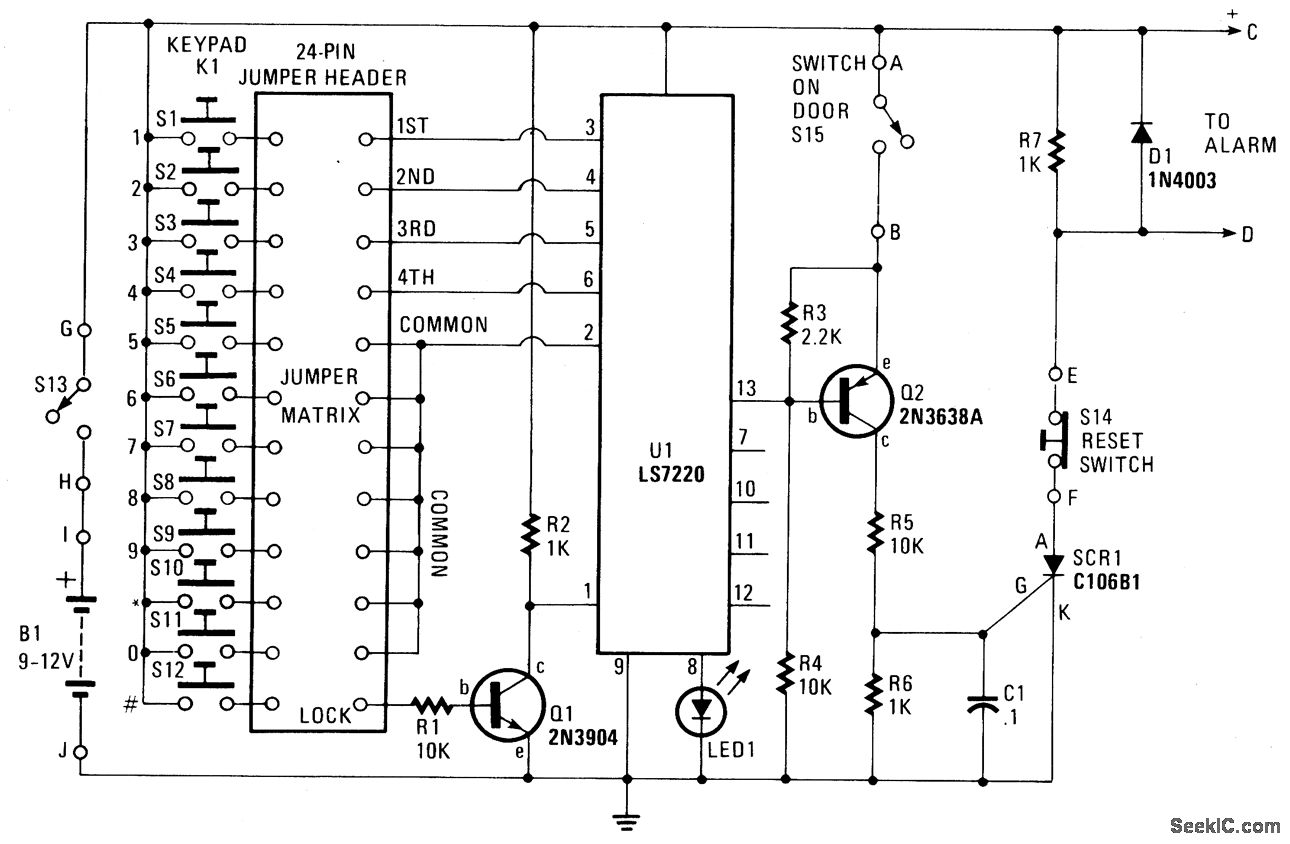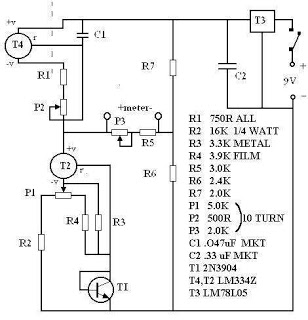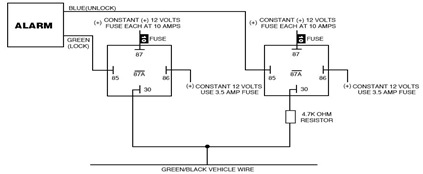
ELECTRONIC COMBINATION LOCK

When button S12 is pressed, a positive voltage supplied through resistor R1 is applied to the base of transistor Q1, activating it. When Q1 is in the conducting state, pin 1 of U1 is connected to ground (low) or the negative terminal of the battery. With pin 1 in a low state, two actions occur: Pin 8 of U1 goes high (+9 volts DC), which turns on LED 1, indicating that the circuit is armed, and pin 13 transitions from high to low. Transistor Q2 requires a low signal or negative voltage at its base to conduct. Additionally, it needs a positive voltage at its emitter and a negative voltage at its collector. As long as the door switch (S15) remains open (with the door closed), the emitter of Q2 will not receive the required positive voltage. However, if an unauthorized individual opens the door, thus closing switch S15 and applying a positive voltage to the emitter of Q1, the following sequence occurs: As Q2 conducts, a voltage drop develops across the voltage divider formed by resistors R5 and R6. With R5 at 10,000 ohms and R6 at 1,000 ohms, approximately one volt is generated at the gate of SCR1, which is sufficient to trigger the gate of the SCR.
The circuit operates as a security system that utilizes a combination of transistors and an SCR (Silicon Controlled Rectifier) to detect unauthorized access through a door. The pressing of button S12 initiates the activation sequence, allowing the circuit to arm itself. The configuration of transistor Q1 ensures that when the system is armed, LED 1 provides a visual indication of the armed status.
Transistor Q2 plays a crucial role in the detection mechanism. It requires specific voltage conditions to operate effectively. The door switch S15 acts as a critical component in the security system; it remains open during normal conditions (with the door closed), preventing Q2 from turning on. When the door is opened, S15 closes, providing the necessary positive voltage to the emitter of Q1, subsequently activating Q2.
The voltage divider network formed by resistors R5 and R6 is essential for controlling the gate of SCR1. The values of R5 and R6 are selected to ensure that a sufficient voltage is present at the gate to trigger the SCR when Q2 conducts. This arrangement allows the SCR to latch on, providing a robust response to unauthorized access, which can be used to activate alarms or other security measures.
Overall, this circuit exemplifies a simple yet effective approach to security monitoring, utilizing basic electronic components to create a reliable detection system. The careful selection of resistor values and the configuration of the transistors and SCR ensure that the system operates within its intended parameters, providing both functionality and reliability in security applications.When button S12 (#) is pressed, a positive voltage fed through R1 appears at the base of transistor Q1, turning it on. When Q1 is conducting, pin 1 of U1 is brought to ground (low) or the battery`s egative terminal. With pin 1 low, two things occur: Pin 8 of U1 goes high (+9 volts dc), turning on LED 1-indicating that the circuit has been armed-an
d pin 13 goes from high to low. Transistor Q2 requires a low signal or negative voltage on its base in order to conduct. It also needs a positive voltage on its emitter and a negative voltage on the collector. As long as the door switch (S15) remains open (with the door itself closed), Q2`s emitter will not receive the necessary positive voltage. If, however, an unauthorized person opens the door, thus closing switch S15 and placing a positive voltage on the emitter of Q1, the following sequence occurs: 2.
As Q2 conducts, a voltage drop is developed across the voltage dividers made upof resistors R5 and R6. With R5 at 10, 000 ohms and R6 at 1000 ohms, approximately one volt appears at the gate of SCR1. That`s enough voltage to trigger the SCR`s gate. 🔗 External reference
The circuit operates as a security system that utilizes a combination of transistors and an SCR (Silicon Controlled Rectifier) to detect unauthorized access through a door. The pressing of button S12 initiates the activation sequence, allowing the circuit to arm itself. The configuration of transistor Q1 ensures that when the system is armed, LED 1 provides a visual indication of the armed status.
Transistor Q2 plays a crucial role in the detection mechanism. It requires specific voltage conditions to operate effectively. The door switch S15 acts as a critical component in the security system; it remains open during normal conditions (with the door closed), preventing Q2 from turning on. When the door is opened, S15 closes, providing the necessary positive voltage to the emitter of Q1, subsequently activating Q2.
The voltage divider network formed by resistors R5 and R6 is essential for controlling the gate of SCR1. The values of R5 and R6 are selected to ensure that a sufficient voltage is present at the gate to trigger the SCR when Q2 conducts. This arrangement allows the SCR to latch on, providing a robust response to unauthorized access, which can be used to activate alarms or other security measures.
Overall, this circuit exemplifies a simple yet effective approach to security monitoring, utilizing basic electronic components to create a reliable detection system. The careful selection of resistor values and the configuration of the transistors and SCR ensure that the system operates within its intended parameters, providing both functionality and reliability in security applications.When button S12 (#) is pressed, a positive voltage fed through R1 appears at the base of transistor Q1, turning it on. When Q1 is conducting, pin 1 of U1 is brought to ground (low) or the battery`s egative terminal. With pin 1 low, two things occur: Pin 8 of U1 goes high (+9 volts dc), turning on LED 1-indicating that the circuit has been armed-an
d pin 13 goes from high to low. Transistor Q2 requires a low signal or negative voltage on its base in order to conduct. It also needs a positive voltage on its emitter and a negative voltage on the collector. As long as the door switch (S15) remains open (with the door itself closed), Q2`s emitter will not receive the necessary positive voltage. If, however, an unauthorized person opens the door, thus closing switch S15 and placing a positive voltage on the emitter of Q1, the following sequence occurs: 2.
As Q2 conducts, a voltage drop is developed across the voltage dividers made upof resistors R5 and R6. With R5 at 10, 000 ohms and R6 at 1000 ohms, approximately one volt appears at the gate of SCR1. That`s enough voltage to trigger the SCR`s gate. 🔗 External reference





